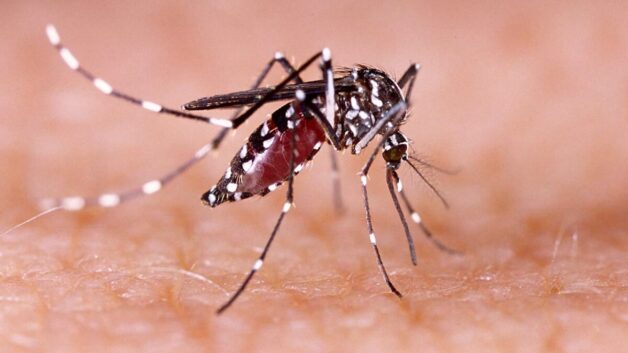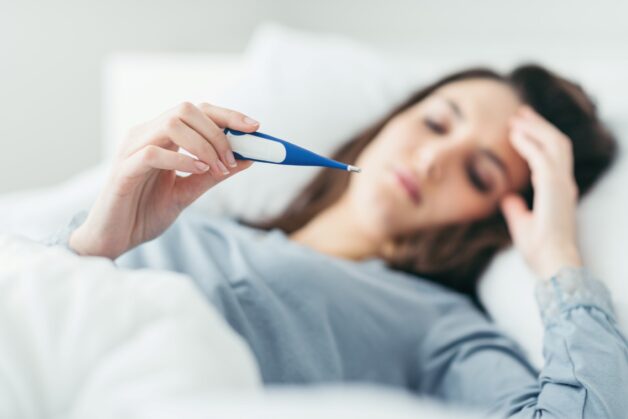Dengue fever, caused by the Dengue virus and transmitted through Aedes aegypti mosquitoes, progresses through three distinct stages, posing significant risks to individuals if not detected and treated promptly. A comprehensive understanding of these three stages is crucial for effective disease recognition and control.
1. Basic Information on Dengue Fever
Dengue fever is an acute, infectious disease transmitted by the Dengue virus from an infected person to a healthy individual through the intermediary vector, Aedes aegypti mosquitoes. The Dengue virus comprises four strains, demonstrating robust and versatile activity with a rapid transmission capability. Failure to implement effective preventive measures may lead to Dengue fever outbreaks.
Globally, an estimated 3.9 billion people are at high risk of Dengue virus infection, with approximately 70% residing in Asian countries. Annually, around 390 million people worldwide contract Dengue virus, with clinical manifestations ranging from mild to moderate fever, etc.
The disease may progress similarly to influenza, causing severe hemorrhagic fever and complications such as severe bleeding, multi-organ failure, and/or plasma leakage. The risk of mortality is significantly high if not diagnosed and treated promptly.
2. Understanding the 3 Stages of Dengue Fever
Dengue fever typically unfolds through three phases: febrile, critical, recovery phases.

Dengue is a viral infection that spreads from mosquitoes to people. It is more common in tropical and subtropical climates.
2.1 Febrile Phase – Initial Stage of Dengue Fever
Characterized by a sudden onset of high fever (39–40°C), this stage lasts for the initial three days after the onset of the disease. Patients experience continuous high fever accompanied by the following symptoms:
– Body aches, fatigue, and malaise
– Intense headache, especially behind the eyes
– Joint pains
– Respiratory symptoms like coughing
– Loss of appetite, nausea, and vomiting
– Skin flushing, with characteristic under-the-skin hemorrhagic spots

High fever is typical symptom of Dengue fever
2.2 Critical Phase of Dengue Fever
This stage typically occurs between days 3 and 7 of the illness and is marked by bleeding tendencies. At this point, fever may either decrease or persist. Patients exhibit bleeding symptoms of varying degrees and locations due to decreased blood platelets. Bleeding locations include:
– Subcutaneous bleeding: Manifests as under-the-skin bleeding spots, often accompanied by itching.
– Mucosal bleeding: Involves gum bleeding, nosebleeds, and heavy menstrual bleeding.
– Gastrointestinal bleeding: Black stools, blood-mixed stools, fresh blood vomiting.
In severe cases, patients may experience brain hemorrhage or abdominal bleeding, posing a life-threatening risk. Dense blood concentration may lead to low blood pressure and shock if fluid balance is not adequately restored.
Danger signs in this stage include:
– Lethargy, malaise
– Excessive vomiting
– Unexplained abdominal pain
– Severe headaches
– Reduced urine output
Immediate hospitalization is necessary upon detecting hemorrhagic symptoms to initiate emergency care.
2.3 The Recovery Phase
This stage begins after 48 hours of the fever subsiding. Patients experience reduced fatigue, improved overall health, increased appetite, and increased urine output. Blood tests show an increase in platelet count.
3. Important Considerations in Dengue Fever Treatment
3.1 Home Treatment vs. Hospitalization
For mild Dengue fever cases, home treatment may be sufficient, following the doctor’s instructions and closely monitoring symptoms. From day 3 onwards, vigilance is crucial to watch for signs of shock and blood loss.
On the third day, if warning signs such as lethargy, restlessness, malaise, abdominal pain, excessive vomiting, reduced urine output, or internal bleeding emerge, immediate hospitalization is imperative for emergency intervention.
For children, if fever subsides by the fourth day without complications, continued observation is necessary.
3.2 Fever Reduction
If the patient’s temperature is below 38.5°C, loosening clothing and applying cool compresses may suffice. For temperatures above 38.5°C, Paracetamol is recommended, avoiding aspirin and ibuprofen due to the risk of increased bleeding.
3.3 Patient Care Guidelines
Primary Dengue fever treatment focuses on symptom improvement, primarily through fever reduction and oral rehydration. Bed rest is crucial, and patients should avoid excessive movement.
To prevent further transmission, patients should remain under mosquito nets during both day and night. Additionally, mosquito control measures in and around living areas are essential.

If you have any suspicious symptoms of dengue fever, you should quickly see a doctor to get the right treatment for the cause.
In conclusion, understanding the three stages of Dengue fever and adhering to proper treatment protocols is crucial. Individuals experiencing Dengue fever symptoms should seek immediate medical attention for accurate diagnosis, determine whether at-home or hospital treatment is appropriate, and receive tailored care based on their condition.








